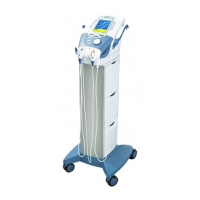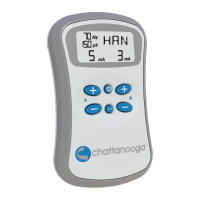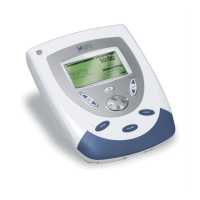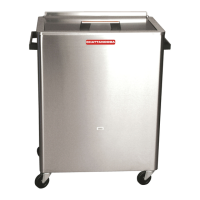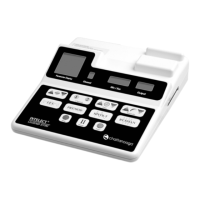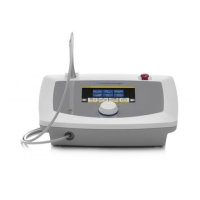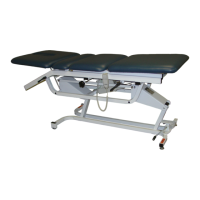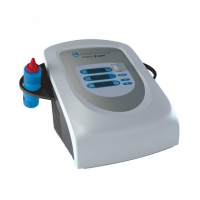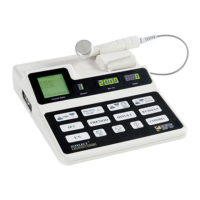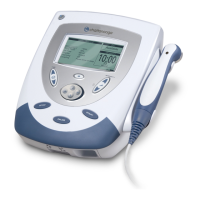Do you have a question about the Chattanooga 3D ActiveTrac and is the answer not in the manual?
Provides a detailed overview of the 3D ActiveTrac table and its traction capabilities.
Explains safety symbols (Caution, Warning, Danger) and general precautions for equipment operation.
Lists conditions that the 3D ActiveTrac table can treat, such as back and neck pain.
Details conditions where the table should not be used due to potential harm.
Lists conditions that require special monitoring or should be avoided during treatment.
Identifies and illustrates the main components and parts of the 3D ActiveTrac table.
Describes key features like the Touchscreen Control Panel, patient control switch, and armrests.
Details the controls for adjusting table height and lumbar section position.
Explains the function and operation of the lumbar section lock/unlock handle.
Describes the levers used for rotating and side-bending the table sections.
Details the application and adjustment of pelvic and thoracic harnesses for treatment.
Explains the use and fitting of slimline belts for various treatment modalities.
Provides instructions for installing the cervical traction accessory.
Defines the maximum excursion limits for lumbar and cervical traction.
Describes the Flexion Stool and Locking Caster Wheels.
Lists technical parameters such as electrical rating, fuse rating, and lifting capacity.
Step-by-step guide on applying and adjusting harnesses for patient positioning and comfort.
Instructions for fitting and utilizing slimline belts for mobilization and traction.
Details the procedure for administering lumbar traction, including safety and execution steps.
Outlines the steps for performing cervical traction using the appropriate accessory.
Explains the functionality of the TCP interface for setting treatment parameters.
Specifies the recommended calibration frequency and procedure for the treatment table.
Provides guidelines for cleaning the table surfaces, upholstery, and accessories.
Addresses problems with motors not working and guides on replacing blown fuses.
Troubleshooting steps for when the traction unit fails to operate or produce force.
Illustrates a practical approach to treating patients with specific postural deformities.
Provides a detailed overview of the 3D ActiveTrac table and its traction capabilities.
Explains safety symbols (Caution, Warning, Danger) and general precautions for equipment operation.
Lists conditions that the 3D ActiveTrac table can treat, such as back and neck pain.
Details conditions where the table should not be used due to potential harm.
Lists conditions that require special monitoring or should be avoided during treatment.
Identifies and illustrates the main components and parts of the 3D ActiveTrac table.
Describes key features like the Touchscreen Control Panel, patient control switch, and armrests.
Details the controls for adjusting table height and lumbar section position.
Explains the function and operation of the lumbar section lock/unlock handle.
Describes the levers used for rotating and side-bending the table sections.
Details the application and adjustment of pelvic and thoracic harnesses for treatment.
Explains the use and fitting of slimline belts for various treatment modalities.
Provides instructions for installing the cervical traction accessory.
Defines the maximum excursion limits for lumbar and cervical traction.
Describes the Flexion Stool and Locking Caster Wheels.
Lists technical parameters such as electrical rating, fuse rating, and lifting capacity.
Step-by-step guide on applying and adjusting harnesses for patient positioning and comfort.
Instructions for fitting and utilizing slimline belts for mobilization and traction.
Details the procedure for administering lumbar traction, including safety and execution steps.
Outlines the steps for performing cervical traction using the appropriate accessory.
Explains the functionality of the TCP interface for setting treatment parameters.
Specifies the recommended calibration frequency and procedure for the treatment table.
Provides guidelines for cleaning the table surfaces, upholstery, and accessories.
Addresses problems with motors not working and guides on replacing blown fuses.
Troubleshooting steps for when the traction unit fails to operate or produce force.
Illustrates a practical approach to treating patients with specific postural deformities.
| Brand | Chattanooga |
|---|---|
| Model | 3D ActiveTrac |
| Category | Medical Equipment |
| Language | English |
